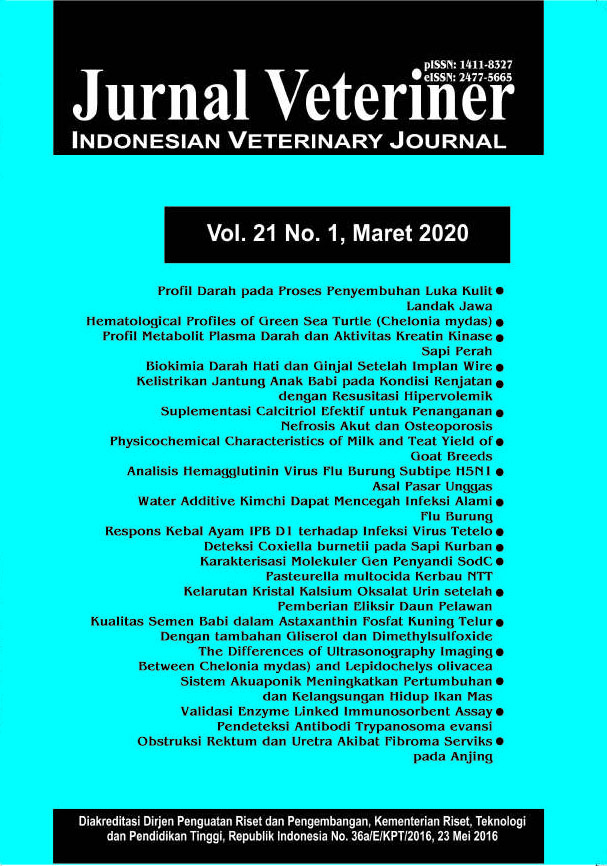The Differences of Ultrasonography Imaging Between Green Turtles (Chelonia mydas) and Olive Ridley Turtles (Lepidochelys olivacea) in Bali (PERBEDAAN CITRA ULTRASONOGRAFI ANTARA PENYU HIJAU (CHELONIA MYDAS) DAN PENYU LEKANG (LEPIDOCHELYS OLIVACEA) DI BALI
Abstract
Ultrasonography is a rapid and non-invasive method for assessing internal organs. The purpose of this study is to determine the differences in ultrasonographic imaging of internal organs between green turtle (Chelonia mydas) and olive ridley turtles (Lepidochelys olivacea). This study used two female green turtles (C. mydas) and two olive ridley turtle (one male and one female) (L. olivacea) with body condition index ranging from Average-Very Good. Micro-convex transducer ultrasonography with frequencies 4.5-8 MHz was used in this study. Acoustic windows were used in this study from cervical dorsal, cervical ventral, cervicobrachial, sinister-dexter, axillary sinister-dexter, prephemoral sinister-dexter and postphemoral sinister-dexter. The necropsies were performed to provide reference data. The results of ultrasonography imaging showed that the jugular vein of the olive ridley turtles (L. olivacea) was wider than the jugular vein of the green turtles (C. mydas). The ultrasonography imaging also showed that the stomach of green turtles (C. mydas) was smooth folds but the stomach of olive ridley turtles (L.olivacea) was sharp folds according to necropsy. There were no differences in the heart, stomach, liver, small intestine, large intestine, and kidneys. Vitellogenic follicles ultrasonography imaging was found from the olive ridley turtles (L. olivacea) which had shown in the period of premating and mating.



















